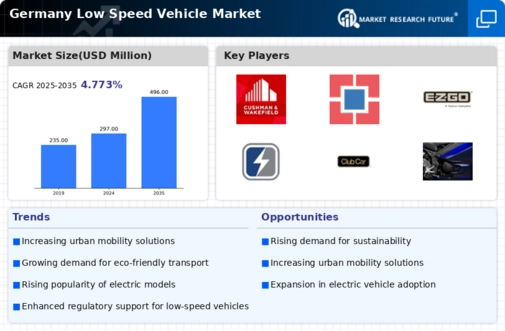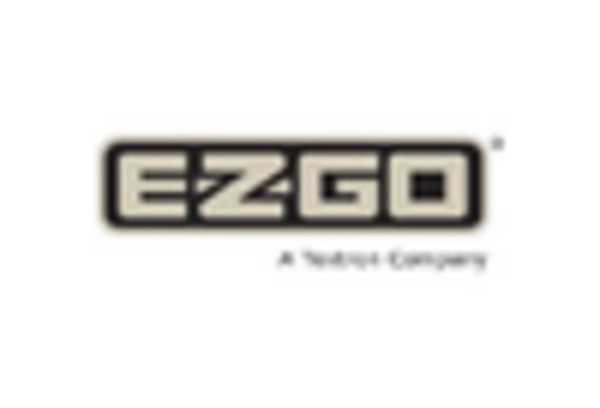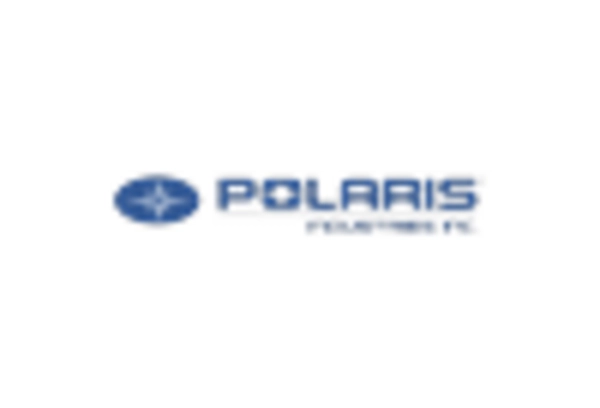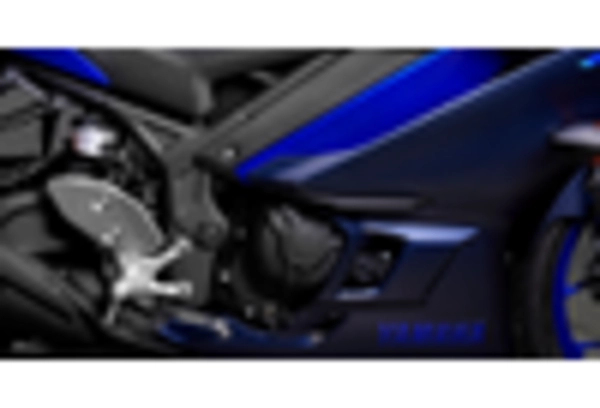Urbanization and Population Density
Germany's urbanization trend is a critical driver for the low speed-vehicle market. As cities become more densely populated, the need for efficient and compact transportation solutions intensifies. Low speed vehicles offer a practical alternative for navigating congested urban areas, making them increasingly appealing to city dwellers. In 2025, urban areas are expected to account for over 70% of the low speed-vehicle market, reflecting a shift towards more localized transportation options. This trend indicates that the low speed-vehicle market is well-positioned to capitalize on urbanization, providing solutions that align with the needs of urban populations.
Cost-Effectiveness of Low Speed Vehicles
The cost-effectiveness of low speed vehicles is a significant driver for their adoption in Germany. With rising fuel prices and maintenance costs associated with traditional vehicles, consumers are increasingly looking for economical alternatives. Low speed vehicles typically have lower operational costs, making them an attractive option for budget-conscious consumers. In 2025, it is projected that the market will see a 10% increase in sales attributed to the financial advantages of low speed vehicles. This trend indicates that the low speed-vehicle market is likely to expand as more consumers recognize the long-term savings associated with these vehicles.
Regulatory Support for Low Speed Vehicles
The low speed-vehicle market in Germany benefits from a robust regulatory framework that encourages the adoption of such vehicles. The German government has implemented various policies aimed at promoting environmentally friendly transportation options. For instance, incentives for electric low speed vehicles, including tax reductions and subsidies, have been introduced. This regulatory support is crucial as it not only enhances consumer interest but also stimulates manufacturers to innovate. In 2025, the market is projected to grow by approximately 15% due to these favorable regulations, indicating a strong alignment between government policies and market growth. The low speed-vehicle market is thus positioned to thrive under these supportive measures.
Technological Integration in Vehicle Design
The integration of advanced technologies in vehicle design is reshaping the low speed-vehicle market in Germany. Innovations such as smart connectivity, autonomous driving features, and enhanced safety systems are becoming standard in new models. This technological evolution not only improves the functionality of low speed vehicles but also attracts a broader consumer base. In 2025, it is anticipated that vehicles equipped with smart technologies will represent approximately 30% of the low speed-vehicle market. This trend suggests that the low speed-vehicle market is evolving rapidly, driven by consumer demand for modern, tech-savvy transportation solutions.
Rising Demand for Eco-Friendly Transportation
There is a growing consumer preference for eco-friendly transportation solutions in Germany, which significantly impacts the low speed-vehicle market. As environmental awareness increases, more individuals are seeking alternatives to traditional vehicles that contribute to lower emissions. The low speed-vehicle market is witnessing a shift, with electric and hybrid models gaining traction. In 2025, it is estimated that the demand for electric low speed vehicles will increase by 20%, driven by both consumer preferences and government initiatives. This trend suggests that the market is evolving to meet the needs of environmentally conscious consumers, thereby enhancing its growth potential.

















Leave a Comment